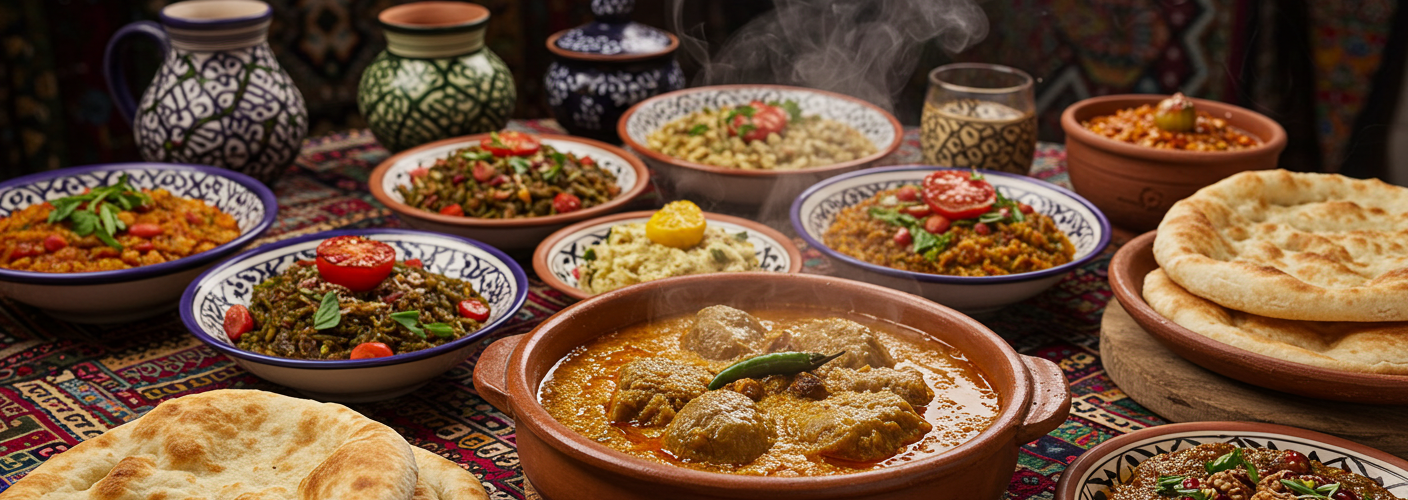Iran, a country rich in history and culture, is also well-known for its diverse and flavorful cuisine. Iranian food is an intricate tapestry woven from a variety of influences that reflect the land’s geographical diversity and the cultural exchanges that have occurred over centuries. From the bustling bazaars to the cozy family kitchens, the essence of Iranian cuisine lies in its use of fresh ingredients, aromatic spices, and age-old cooking techniques.
The Staples of Iranian Cuisine
At the heart of every Iranian meal is rice, the cornerstone of Iranian gastronomy. One of the most celebrated rice dishes is Persian saffron rice (chelow), which is often served with a variety of stews known as khoresh. These stews are a delightful combination of meats, vegetables, and legumes, slowly simmered to create rich and robust flavors. One popular example is khoresh-e ghormeh sabzi, a fragrant lamb stew made with a medley of herbs, kidney beans, and dried limes.
Besides rice, bread (known as nan) holds a significant place in Iranian meals. Traditional Iranian bread comes in different varieties, such as sangak (a whole grain bread baked on hot stones) and lavash (thin flatbread), both of which pair beautifully with stews, grilled meats, and fresh herbs.
Spices and Aromatics
Spices play a crucial role in enhancing the flavors of Iranian dishes. A delicate balance of spices, such as turmeric, cumin, and cinnamon, is often used to season meats and vegetables. One cannot overlook the use of saffron – revered for its vibrant color and unique flavor, saffron is a luxurious addition that is frequently used in rice dishes and desserts, leaving an unforgettable impression on the palate.
Herbs are another essential component of Iranian cooking. Fresh herbs like parsley, cilantro, and mint are commonly incorporated into dishes and served alongside meals, bringing freshness and vitality. The combination of herbs and spices is often served with sabzi khordan, a platter of fresh herbs, radishes, and feta cheese that adds a refreshing contrast to the richness of the stews.
Irresistible Kabobs
When it comes to grilled meats, Iran is renowned for its kabobs. The succulent pieces of marinated lamb, chicken, or beef are skewered and grilled to perfection over an open flame. One popular variant is kabab koobideh, made with ground meat mixed with onions and spices, giving it a unique flavor and texture. The kabobs are often served with grilled tomatoes and saffron rice, making for a wonderfully satisfying meal.
Sweet Endings
No Iranian meal is complete without an offering of sweets. Desserts like baklava, with its crisp layers of pastry filled with nuts and honey, and saffron ice cream, known as bastani, offer a delightful conclusion to any feast. Another beloved treat is pistachio nougat (sohan) – a crunchy, sweet confection that showcases the rich flavors of Iran’s high-quality nuts.
Conclusion
Exploring Iranian food is not just about taste; it’s an experience that brings together family and friends across generations. The communal aspect of dining, paired with the array of delicious dishes, makes Iranian cuisine a true celebration of life. Whether you are indulging in a fragrant stew or savoring a sweet dessert, each bite reflects the warmth and hospitality of Iranian culture. So, the next time you’re looking to embark on a culinary adventure, consider delving into the rich and diverse world of Iranian food.




Add comment